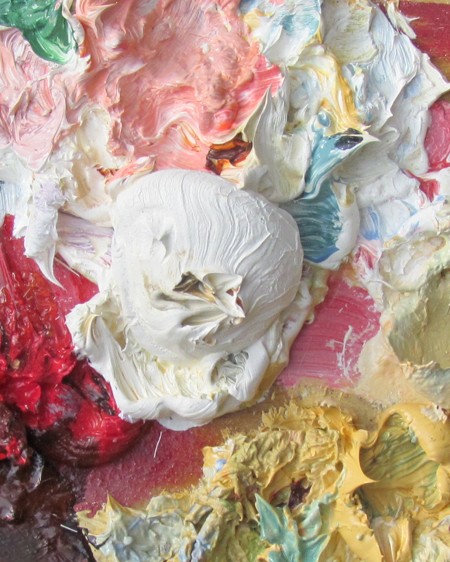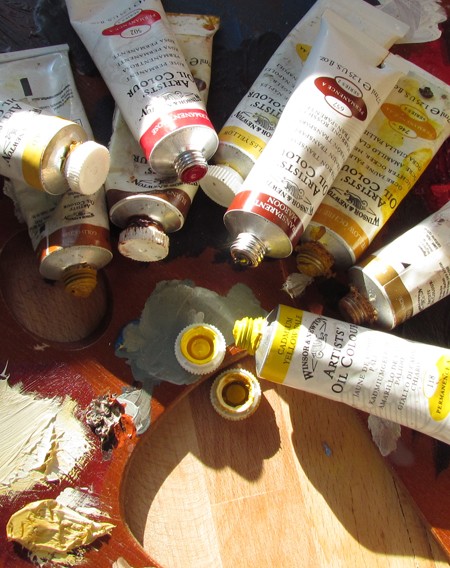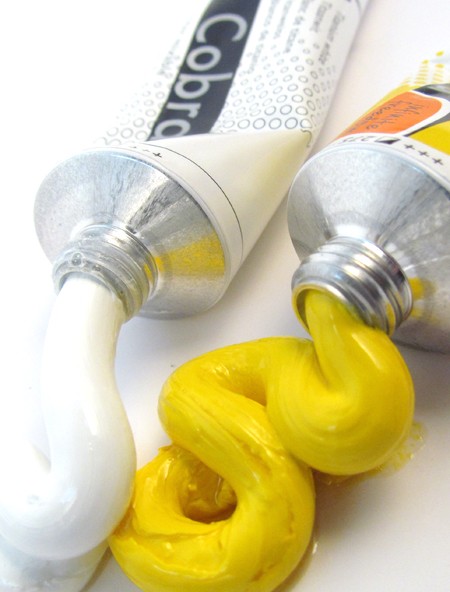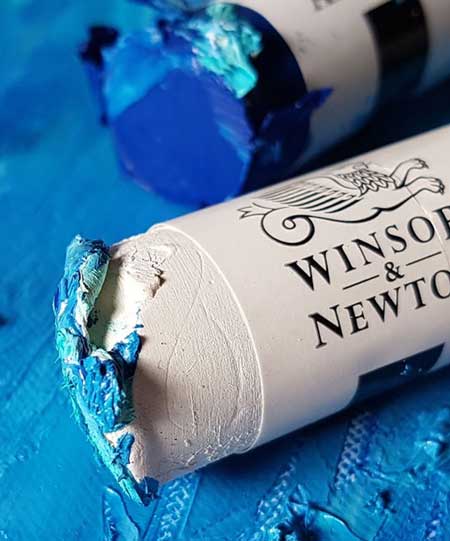All About Oil

Oil Painting - possibly a Self-portrait - by Jan Van Eyck, one of the foremost pioneers of painting with oils
Oil Paint was already a popular medium by the end of the 14th Century and has remained so because of its versatility, longevity and beauty. Because of its slow drying times, it is easy to mix, apply, blend, build up and, should corrections be necessary, wipe off and start again! It can be used straight from the tube for thick impasto texture, it can be thinned to create luminous glazes that can be built up to achieve stunning depth, it can be applied with brushes, painting knives, rags and anything else that comes to hand, can be painted on canvas, wood, metal and millboard and can be painted over and scrapped into.
With the correct solvents and bearing in mind a couple of basic rules, artwork in oil can endure for centuries. Its main problem is cracking but this can be minimized by using solvents that create a bond between the surface and pigments. Turpentine, distilled from pine resin, is the ideal natural substance to thin the paint whilst ensuring that this bond is maintained and there are various oils that can be used to create glazes without breaking down the paint. See our section on Solvents further down the page for more details.
When thinned paint is applied to layers of thick paint, the top layer will crack as the lower layers continue to dry. To avoid this, the ‘fat over lean’ rule should be considered. This involves ensuring that the first layers applied consist of paint thinned with turpentine and that subsequent layers have more oil and paint content than turps. Oil Paint has a richness of colour, lustre, luminosity and luscious consistency that no other medium can replicate and the results that can be achieved with it are diverse and very pleasing to the eye.

Oil Paint It is basically dry pigment held in a vegetable oil, usually either linseed, poppy or safflower oil. As with watercolours and acrylics, there are Artist ranges and student ranges. The cost of the artists’ colours are split into ‘series’ reflecting the cost of the pigments used to make each colour and the price of a student range is set at one low cost across all the colours. The best Artist’s Oil is simply high quality pigment in oil whilst student versions may have driers and other substances bulking out the paint alongside cheaper pigments. The student ranges will also have far fewer colours because many of the Artists’ colours can not be replicated at the lower cost. Where an alternative or synthetic pigment has been used in any oil colour, it will be referred to as a ‘hue’.
Artists’ Oils

Every Artist’s oil paint is all about the pigment. In order to achieve the highest quality colours that are resistant to colour shift, unwanted chemical reactions with other pigments, fading, muddying and lack of vitality, the very purest pigments are used. They are tested thoroughly to ensure they are stable, bright and clean to help you produce fantastic artwork that will endure. The main thing to note about Artists’ oils is that some pigments cost more to extract and process and so the colour they produce will cost more. As a result, Artists’ colours are ordered in ‘series’ with series 1 being the cheapest of the colours and the higher series costing more. Earth tones tend to be among the series 1s, whilst the higher series are made up of the cadmiums, cobalts and madders. As with student oil, there will be slight differences between the pigments in relation to drying times, surface sheen and transparency.
Things to note...
Can be thinned to a fine glaze or applied straight from the tube for a thick, impasto finish which will retain brush or palette knife marks well.
A finished oil painting should be left for 3-6 months before varnishing. A thin coating of retouching varnish can be applied as an interim measure after 1 month.
Distilled turpentine can be used to thin the oil. Add increasingly ‘fatter layers’ as you build up your painting by using less turpentine and more oil and paint. This is the basic ‘fat over lean’ rule which will stop the paint cracking.
Student Oil

Unlike the Artist’s range - which is priced in series to reflect the price of the pigment each colour contains - student ranges have one low set price for all colours. A good student oil will achieve this by using moderately-priced pigments instead of skimping on the pigment content. As a result, the paints should have a good covering power and tinting strength for strong colour and, as single pigments are used wherever possible, should be bright and clean. A lower quality range will contain bulking agents and less pigment resulting in not such good coverage and a readiness to 'muddy' when mixing colours.
Some pigments are simply too high a price to be used in student ranges and so some colours will only be available in the much broader Artist’s ranges. As with all oil paint, there will be different drying times and slightly different sheens between different colours depending on how the pigment reacts with the oil. Again, with a good brand, the differences should be minimal.
Things to note...
Can be used on gesso-primed canvas, paper, board and wood.
Liquin will speed up the drying times.
Is compatible with solvents and oils from both student and artists quality ranges
Water-mixable Oil

With the addition of chemicals that help to break down the oil, Water Mixable Oil Colour can be mixed with water and equipment can be cleaned with water. It is ideal for people who can not work with solvents or who are in classroom or closed-in environment. Its long 'open time' and non-solvent base means that it can be used as block printing ink too.
Things to note...
Contrary to popular belief, it does not offer greatly increased drying times and some colours will still take around 5 days or longer to dry.
It can not be mixed with regular oil paint and solvents but brands that produce water mixable oils usually have a good spectrum of colours and their own dedicated range of solvents.
Again, there will be Artists' and Students' ranges available. We offer Winsor & Newton 'Artisan' Artists WMOC and Royal Talens 'Cobra Study' Student range.
Oil Bars

Oil Bars are Artist quality oil paint in a stick form comprising of high quality pigment, linseed or safflower oil and a specially selected wax which allows the artist to sketch in oil. The thicker, butter-like consistency of the material is transferred easily to the surface so you can enjoy the richness of colour and texture that you would expect from oil combined with the directness and freeness of a drawing medium. It is the rich consistency that sets them apart from oil pastels.
Things to note...
Can be used in conjunction with tube paint and can be mixed with oil mediums to behave like tube paint.
Has comparable drying times to tube paint and can be used on the same surfaces.
